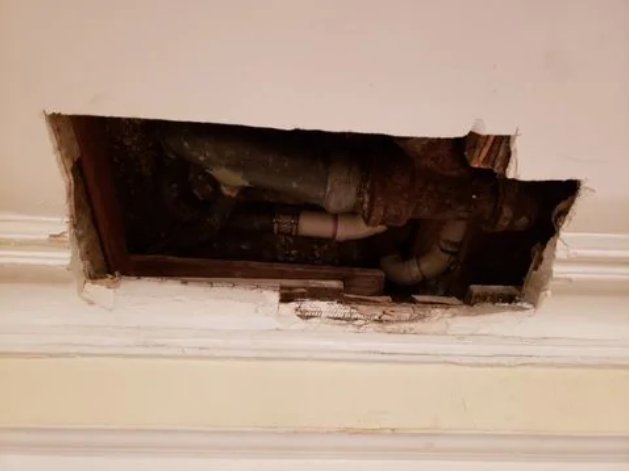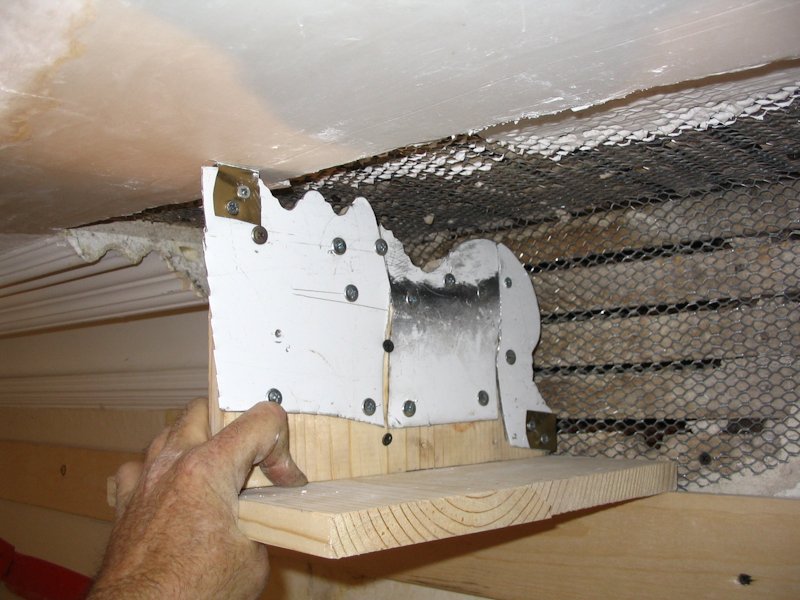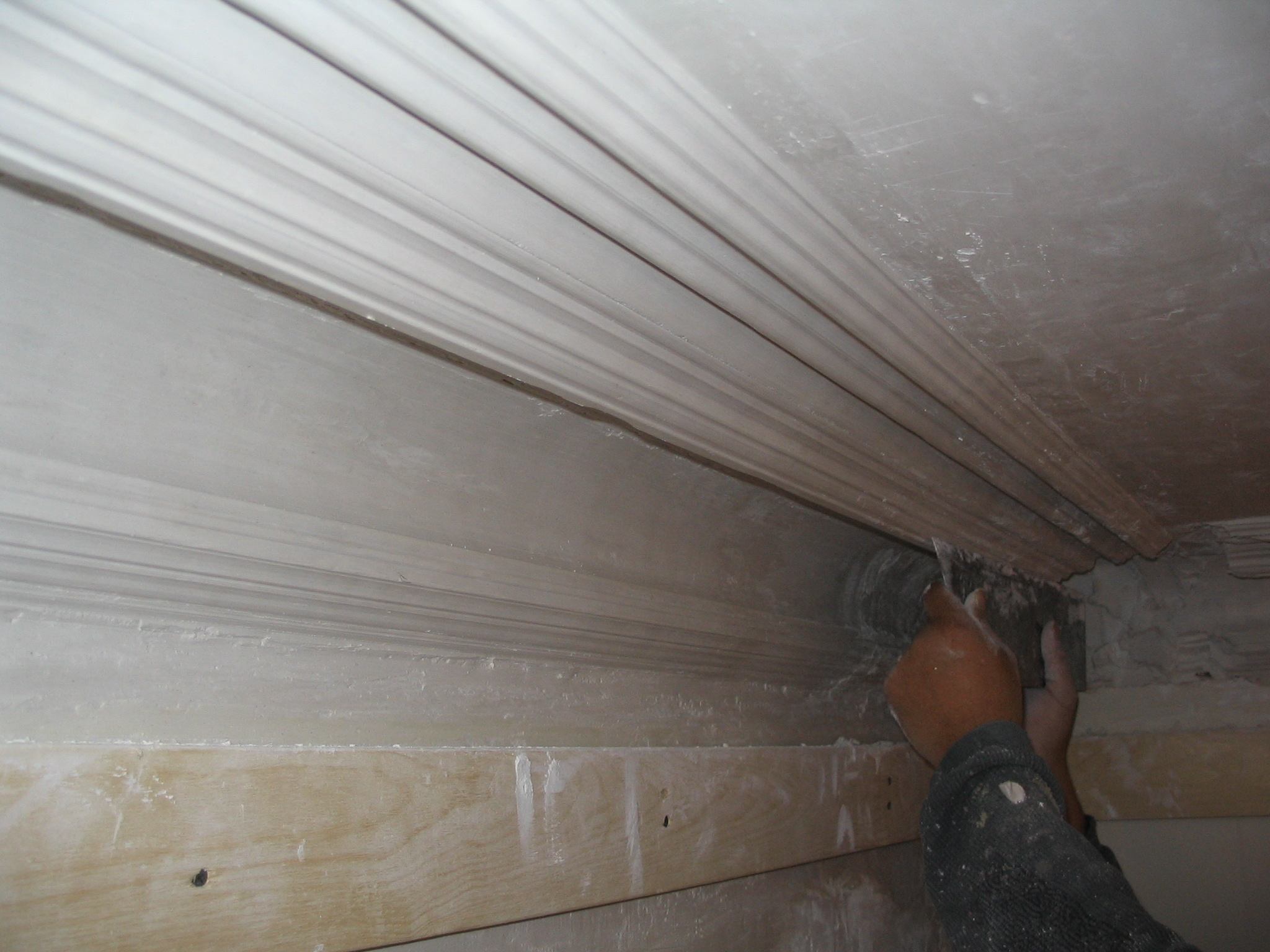From the Washington Post

You can replace that plaster crown molding, but it’ll cost you
Q: Our plumber had to cut two holes in our dining room ceiling and remove a section of original cast-plaster crown molding to assess, access and make repairs to the second-floor bathroom plumbing above. Although I'm thankful we won't have to pull up any of the near-perfect 1913 hexagonal bathroom floor tile, I have no idea where to go for replacement molding. Does it look like this is a "stock" design? Will we need to have a mold and molding custom-made, or is this something we could do ourselves? Would it make sense to repair other areas of water damage in the room at the same time?
Here's a link to the article, named: You can replace that plaster crown molding, but it’ll cost you.

An example of a running mold, to run moldings in place. Click for details.

This picture is on my home page. It shows our mouldings are straight. Click for more.
For a decent job, the mouldings must be run in place using a running mold. Note I spell molding both "molding" and "moulding". That way both search words can be discovered.
Cast moldings almost invariably look like link sausage, particularly when used to patch run in place moldings. Take this from someone with a lot of experience putting on cast moldings. The joints almost always show, unless they are hidden in the pattern. One can almost always see the repeating pattern.
The article explained someone from Utah can cast sections of the molding if they were sent to him out of fiber reinforced gypsum. I can make the casts right here in my shop using silicone mold rubber and molding plaster just as easy as I can make a running mold, for a lot less, seeing how I don't have to ship anything. This is a poor way of doing things. If you have a three foot gap to fill, and need to remove a one foot section to cast, now you have 4 link sausages.
Cast moldings almost invariably look like link sausage, particularly when used to patch run in place moldings. Take this from someone with a lot of experience putting on cast moldings. The joints almost always show, unless they are hidden in the pattern. One can almost always see the repeating pattern.
Bear in mind, if the moldings are just stuck on, they would need to be stuck on a straight surface. This would require filling straightening the ceiling. A wavy patch produces wavy moldings. This requires skill in lath and plaster to produce a straight and strong surface. You can't just stick moldings up on a crooked surface and expect them to magically come out straight and well aligned.
We have re stuck on loose moldings in historic buildings using molding plaster and lime
Each end of the molding needs to be held in precise alignment until the plaster starts to set. This requires at least two people and precise straight edges
We used to joke about this. Instead of propping the molding with a stick, a person would have to hold this molding in place until the mortar sets. We called this worker abuse, being used for human sticks.
I got mad and hung up on the interviewer, because she suggested the homeowners can make the mold themselves. I am sorry, but experience counts. I learned how to do this from old people, who learned from old people. You can't just watch a youtube video and run moldings.
A couple of mystic secrets while I am on the subject of cast moldings:
Unlike wood, cast moldings should be stored stood on end, and not laying down flat, or they will warp.
Believe it or not, sawing molding plaster with a hand saw will eat the teeth off your saw quickly, even though molding plaster is softer than wood. Fresh cast plaster can be cut by sawing with a sharp knife.